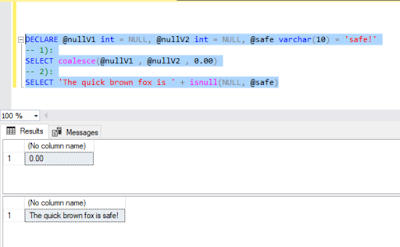For short US datetime format use this:
select convert(varchar, getDate(), 1) --10/15/2017
For a list of most others (SQL Server), see: https://rauofthameem.wordpress.com/2012/09/14/sql-date-time-conversion-cheat-sheet/
On to the useful SQL dates:
select dateadd(mm, datediff(mm, 1, getDate()), 0) as FirstaTheMonth
select dateadd(ms, -3, dateadd(mm, datediff(m, 0, getDate()) + 1, 0)) as LastaTheMonth
select dateadd(qq, datediff(qq, 0, getDate()), 0) as FirstDayOfQtr
select dateadd(wk, datediff(wk, 0, dateadd(dd, 6 - datepart(day, getDate()), getDate())), 0) --(First Monday of Month)
Great T-SQL References:
http://www.gehbeez.com/sql-get-first-and-last-day-of-a-week-month-quarter-year/
http://brianvanderplaats.com/cheat-sheets/T-SQL-Cheat-Sheet.html
select convert(varchar, getDate(), 1) --10/15/2017
For a list of most others (SQL Server), see: https://rauofthameem.wordpress.com/2012/09/14/sql-date-time-conversion-cheat-sheet/
On to the useful SQL dates:
select dateadd(mm, datediff(mm, 1, getDate()), 0) as FirstaTheMonth
select dateadd(ms, -3, dateadd(mm, datediff(m, 0, getDate()) + 1, 0)) as LastaTheMonth
select dateadd(qq, datediff(qq, 0, getDate()), 0) as FirstDayOfQtr
select dateadd(wk, datediff(wk, 0, dateadd(dd, 6 - datepart(day, getDate()), getDate())), 0) --(First Monday of Month)
Great T-SQL References:
http://www.gehbeez.com/sql-get-first-and-last-day-of-a-week-month-quarter-year/
http://brianvanderplaats.com/cheat-sheets/T-SQL-Cheat-Sheet.html









